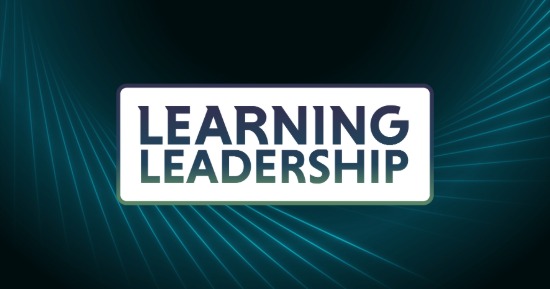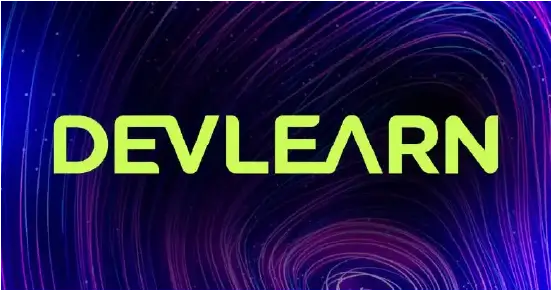I have never experienced a formal onboarding program. Not one. And I am old, so there have been several jobs—corporate, government, consulting, etc.
The closest I came to it was when I worked for a major university. They had an “orientation” for everyone who had been recently hired (for me, “recent” was nearly six months) and it focused exclusively on benefits and culture and was not audience specific.
In fact, because they hired hourly employees more often than salaried employees like me, most of the presentation focused on those positions. It was a half-day, in-person event. We left with packets and t-shirts and were sent back to work. That was it. What about my specific department? Again, nothing. I was assigned a person to take my questions to, and that was it.
Now, I am the type of person who does not like to waste time and I was at a place in my career where I could apply my experience and figure it out, but not everyone is comfortable doing that. So, what about them?
Did you know that 2.5% of workers switched jobs each month from January to March in 2022? (Pew, 2022)
When the math is done (by someone else), this is an annual turnover rate of 30%. Most of them reported they had a new job within a month. That is a lot of new employees out there that need onboarding.
Did you know that 69% of employees say they are likely to stay with a company for a least three years after a great onboarding experience? (O.C.Tanner, 2018)
In many instances, onboarding is expected to be handled by human resources. There is absolutely nothing wrong with that but unless they are also training experts, a lot of companies could be missing an opportunity to create something special. Letting training and development experts augment HR can result in an onboarding program that provides the experience new employees need to get comfy.
Here are 10 things you can do to make your onboarding program a learner experience that will provide the anchor newbies need to stick around.
1. Analysis
<grabs soap box, climbs on> If you want to know what your onboarding program should look like, ask. Onboarding, when approached as a learning initiative, should start like all large-scale L&D initiatives. I have preached about this before so I won’t stand up here long, but conduct a full-scale, deep-dive needs analysis. Don’t just talk to managers and supervisors—talk to recently hired employees and ask them what would have been helpful to them as they came onboard. An onboarding analysis should not be rushed or skimmed. This is not developing one training event, it is an experience. <steps off soap box, puts it away for now>
2. It’s a journey–not an event
Onboarding is not a one-and-done. New hires have a lot of stuff to learn about a new company—the position, their tasks, the social system, where the bathrooms are located, what to do when their computer doesn’t work. They cannot absorb all the information in a one-time event. And I hate to be the one to tell you, but hiring people and “handing them over” to training for the first few weeks with an expectation they are going to come back fully trained and ready to go is not going to work.
Did you know that new hires in companies with longer onboarding programs report being more proficient in their roles four months sooner than in companies with short onboarding programs? (O.C. Tanner, 2018)
How long an onboarding experience should be depends on what you find in the analysis. What is the typical ramp-up expectation for the position? That is a factor for the skills-based, role-specific training needs, but the initial training is one thing. What are you going to do to support that knowledge in the long term to ensure the employee can get the reinforcement they need, when they need it? I noticed it is being referred to as “everboarding” and I like that.
3. Getting personal
Onboarding is not one-and-done and it is also not one-size-fits-all. Your analysis will tell you who the audiences are and the unique info each one needs.
Did you know that 91% of employees want personalized, relevant training? (Lorman, 2021)
Before your head explodes from the way this sounds, it is not about designing a new program for each person. It is about developing materials that, when arranged into a training path, can meet the needs of individuals while still covering the overall needs of the company.
4. Mentors/onboarding buddies
Call them whatever you want, but call them something!
Did you know that 87% of organizations that assigned a mentor to a new employee during onboarding reported increases in the efficiency of new hires? (Techjury, 2023)
Again, analysis will tell you whether your company has the capacity to support this approach. I would say that if you are going to recommend new hires “ask co-workers” questions, you might as well formalize it so you can measure success. This is a two-part task. You are not just concentrating on what the new hires need to know. You will also have to do some prep to find and develop the right mentors. Sorry, but “voluntelling” someone to do it is not what will work here.
5. Variety is the spice of life
It is also true in the workplace. I am begging you not to stick new employees in a training room (virtual or actual) for six or seven hours a day listening to instructor-led training for several weeks. Just reading that sentence makes my eyes bleed. Imagine what it is doing to those trainees?
Did you know that people are 95% more likely to recall knowledge delivered via video than text alone? (PopVideo, 2016)
We all know engagement is one of the keys to learning, so offer a variety of training modalities, events, and opportunities for new employees.
6. Reinforcement
Remember what I wrote about one-and-done? You don’t? Maybe you need some reinforcement?
Did you know that people forget about 50% of information presented to them in the first hour; 90% within a week? (Learning Guild, 2014)
I would hypothesize that under the stress of “new employee,” the stats are worse for these audiences. This is where your variety of modalities, mentors, and technology can boost your reinforcement efforts.
7. Metrics and benchmarks
New employees should have their own set of metrics and benchmarks.
Did you know that 60% of companies indicate that they do not set any milestones or concrete goals for new hires to attain? (Harvard Business Review, 2018)
New hires should not be expected to perform at the same level as experienced employees. These metrics should also not be a secret. Another note here: people acting as mentors or onboarding buddies should also have adjusted performance metrics while they are assigned to assist someone.
8. Buy-in and support
Did you know that 70% of change efforts fail? (Growth Engineering, 2022).
L&D programs like onboarding are change and with a stat like this and the effort required for onboarding, support must be top-down.
Onboarding experiences are long-term. Standing up an onboarding program is not cheap and it can also take time. Buy-in really needs to be obtained, for the most part, before you even start analyzing the needs. As mentioned, this is a large analysis project, so just looking into the needs can take time and money. When you wrap company-level needs like culture, mission, and strategy into role-based skills training needs, onboarding development projects can also result in a lot of deliverables, so get buy-in before you start.
9. Fun
Are you sitting down? There is absolutely nothing wrong with adding some fun in training! Can we all agree to relax a bit? People have been through some stuff for the last few years. What is unique and cool about your workplace? Show it off! Showcase the good stuff and prepare people to deal with the not-so-good stuff. Use these unique and cool things to create engaging opportunities throughout the onboarding experience.
Did you know that learners are 20 times more likely to remember facts and figures if they’re part of a story? (Harvard Business Publishing, 2017)
Yes, there are serious business tasks to learn but presenting that training wrapped in a fun story or as a game can actually increase retention of learning.
10. Clarity
Remember my story at the top about no onboarding? Remember the stats mentioned above about metrics? Don’t leave your new hires in the same place. Like providing rubrics for students in a school classroom, the metrics don’t have to be a secret. And they shouldn’t be. Providing a clear picture of expectations (keep them realistic) and how those are measured makes learners (new hires) feel confident about where they are and where they are going. On the flip side, they allow managers and supervisors to support and assist new employees in getting up to speed.
Watch this space for more information about each of these. We will take a closer look at each one, dive deeper, and offer some practical approaches to a successful onboarding program.










